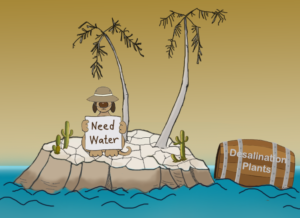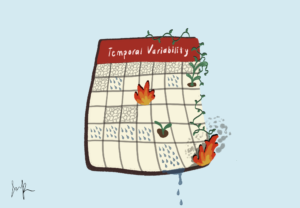
Single-use devices, as their name suggests, are products designed to be used only once before disposal: plastic water bottles, straws, and cutlery. While single-use devices are convenient in our day-to-day lives, they can exacerbate environmental issues by contributing to pollution and ecosystem disruption.
Devices like plastic bottles and bags require heavy amounts of energy to produce—energy generated through fossil fuel combustion, which releases carbon dioxide and impacts the earth’s climate. Acquiring these materials often involves heavy material extraction, which can displace vital ecosystems and possibly endanger species. Coal mining, for example, requires heavy drilling and blasting in excavation sites. Explosives are inserted into drill holes and remotely detonated for more efficient extraction, placing a heavy burden on soil and plant communities, leading to deforestation and long-term habitat destruction.
Single-use devices also heighten issues related to waste management. Because they are thrown away after only one use, these products can create a large volume of waste in a relatively short time frame. Disposable plastic bags have consistently been found in ocean trenches, ponds, and lakes—posing a significant threat to aquatic life and public health.
Given the risk of single-use devices, what can we do every day to minimize our environmental and ecological impact?
Here are a few tips:
Reusable devices
Instead of regularly purchasing and discarding plastic water bottles, bags, cups, and silverware, we can invest in reusable grocery bags and refillable water bottles made from BPA-free materials. Choosing reusable devices is both environmentally friendly and more cost-effective in the long run. The price of a plastic water bottle can range from $1 to $1.50 each. However, continuing to buy plastic bottles can become expensive over time compared to reusable bottles like Hydro Flasks that can be used endlessly, with a much lower one-time cost.
Biodegradable devices
While 8-12 oz of soda only takes a few minutes to drink, the aluminum can packaging can take up to 200 years to decompose. Similarly, straws, six-pack plastic rings, aluminum foil, and other non-biodegradable items take hundreds of years to break down, rapidly filling landfills and dumpsites. In healthcare, for instance, disposable gloves, gowns, and masks, which can take 100+ years to decompose, can be replaced with FDA-approved biodegradable nitrile gloves that decompose in less than a decade. During social gatherings or when you’re on the go, try using paper alternatives to plastic plates and utensils, such as eco-friendly cutlery. Switching to these biodegradable alternatives will help decrease the rate of pollution and global warming while also minimizing waste.
Recycling or repurposing waste
Although many single-use devices can be replaced by biodegradable or reusable alternatives, there remain some that simply cannot be substituted without considerable performance drops. In these cases, it’s incredibly important to recycle or find new use cases. For example, old phones can be recycled at your local battery and cell phone recycling sites, and kitchen waste like vegetable peels and fruit scraps can be used as fertilizer for your garden. Instead of taking up space in landfills, this waste can pave the way for a more circular economic model by being reconditioned for alternative use.
These solutions can be accessible to many households and firms regardless of socioeconomic status, simply taking minute lifestyle changes that can compound over time. By switching to reusable alternatives and encouraging people around you to follow suit, you can significantly reduce your environmental impact and be a catalyst for environmental change in your community.




